When cold weather cooking is upon us, we pull out our roasts, braises, bakes, and layered dishes.
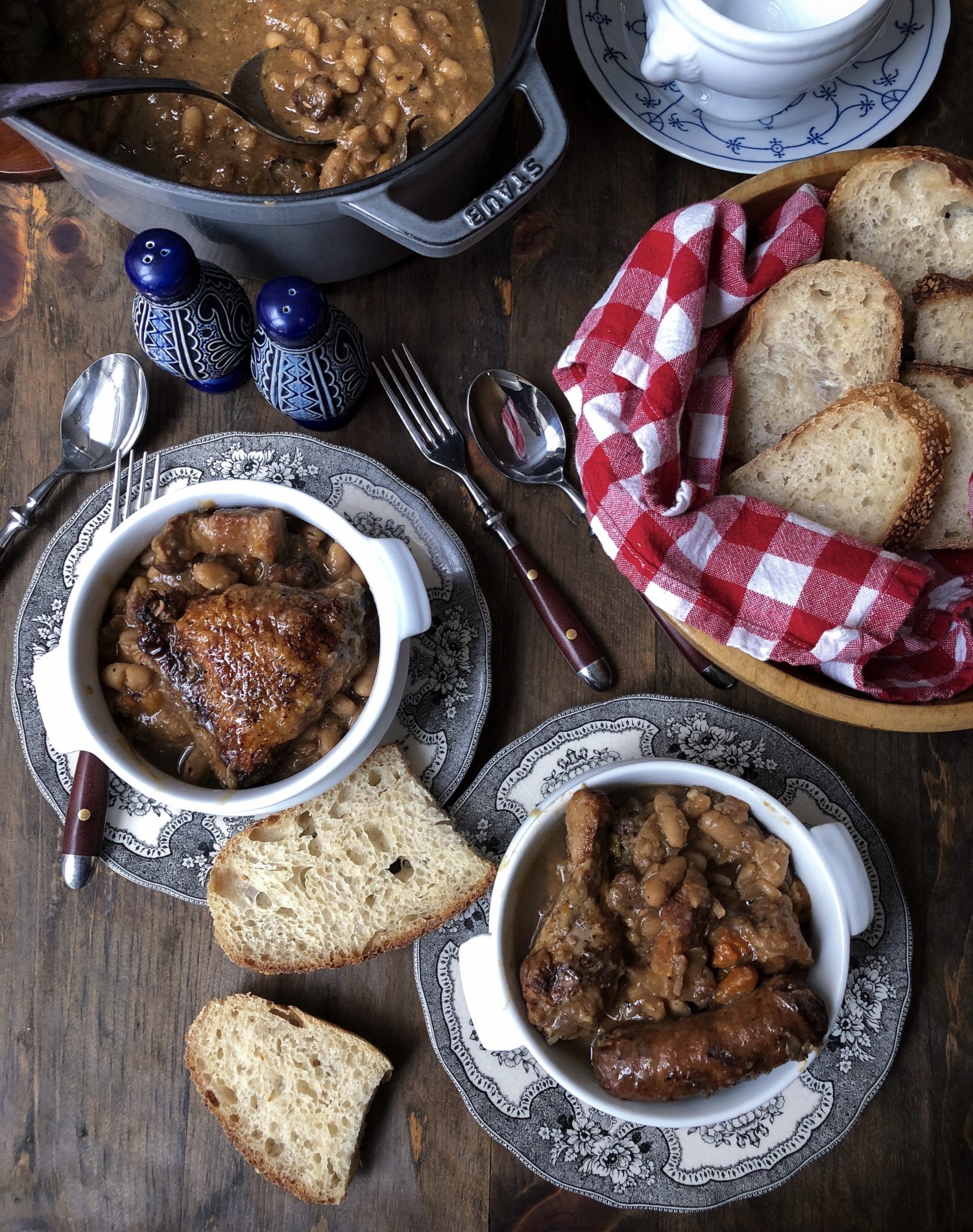 It’s those layers of meats, cheeses, veggies, carbs, gravies and sauces etc that turn into the most cozy dishes to serve our family and friends. Whether it’s lasagna, chilli, soups; braised lamb shanks and polenta or mashed potatoes, or pot roast with root veggies, we all have our favourite meals that are the food version of a big fleecy blanket and fuzzy slippers.
It’s those layers of meats, cheeses, veggies, carbs, gravies and sauces etc that turn into the most cozy dishes to serve our family and friends. Whether it’s lasagna, chilli, soups; braised lamb shanks and polenta or mashed potatoes, or pot roast with root veggies, we all have our favourite meals that are the food version of a big fleecy blanket and fuzzy slippers.
One of my favourites is Cassoulet. It’s a French concoction of seared meats, baked beans and spices. There are as many Cassoulet versions as there are French grandmothers out there. And each will staunchly defend that their version is the only classic version. Regions have their own opinions as well. It can spark heated debates. Breadcrumb crust or not? Duck or chicken? Mirepoix left in or removed? So, to sift through the cornucopia of recipes can be a career in itself.
I have had my share of versions throughout the years. Each had something unique to offer. But more often than not, I walked away from the meal dissatisfied. My belly may have been full, but my heart wasn’t. Usually because the recipe I tried or was offered to me ended up being thick, kinda stodgy- with the beans becoming all gloopy and stiff. The cuts of meat can be fatty, and if you’re not careful, that fattiness combined with the thick bean portion can become overwhelmingly heavy.
At its heart, Cassoulet is a cross between pork and beans, and a stew. But if you say this to a Frenchman they will cringe! And perhaps employ some colourful language.
To me, the perfect Cassoulet is a texture somewhere between a soup and stew. There should be some lovely broth to loosen up the beans and veggies. The meats should be perfectly seared so that they don’t turn totally soggy while in the oven. The spices and herbs should make you smile, should have a presence, not get lost in the fattiness of the meats. I actually want the spices to lean to the warm (kicky) side, to counteract the richness of the dish. You should finish a bowl, satisfied, not heavy.
I knew there had to be a way to achieve all of the above. And then I finally found it. It is J Kenji Lopez-Alt’s version over at Serious Eats. He thoroughly breaks down his feelings on the matter as well, and the decision behind cooking it his way. What I found most intriguing about his approach to the dish is his use of duck fat. Instead of using duck confit as a major component (which is classic, by the way) he suggests using the duck fat to sear the pork belly and chicken thighs and legs, and garlic sausages. It imparts the required duck flavours, but eliminates the need to purchase the more expensive duck legs. This totally makes the dish more accessible and approachable for us mere mortals. Plus not everyone likes duck (Jim). Instead of using ham hocks, spare ribs, and/or bacon, he feels that the pork belly is enough. I totally agree. The final dish is already so rich, that using the ham hock meat just sends the rich factor way too high. People will be finding themselves full after only a few spoonfuls. He also has us coating the chicken with a generous amount of pepper- don’t skimp. Pepper is another key to cutting through the richness of the dish. And adds some warmth.
His other game changer is to use highly gelatinized chicken stock. This can be achieved two ways. If you make your own homemade stock, you can easily ensure that it will be high in natural gelatin. Gelatin is naturally found in all bones. As we cook them down in the stock liquid (I have an amazing trick to release even more of the gelatin in my New You Bone Broth recipe!) the gelatin and collagen become part of the final broth. You know when you take a bowl of broth and put it in the fridge overnight, and then it is all thick any jelly-like the next day? That is the gelatin at work. It is what makes Jell-O! So if you have long-cooked homemade stock, it will work great for this Cassoulet recipe. If you don’t have any, then just add store bought unflavoured gelatin powder to your purchased stock. You want all the gelatin you can get, for the following reason: Instead of using breadcrumbs to create a crust on the casserole, which can turn the final dish all goopy if not careful, the gelatin creates an amazing thick skin as the liquid cooks down and the heat bakes it. The final result is a deep mahogany brown skin, as well as very browned chicken skins. The liquid underneath will not become inadvertently thicker due to the breadcrumbs, but will be the perfect consistency to keep the beans from turn into glue.
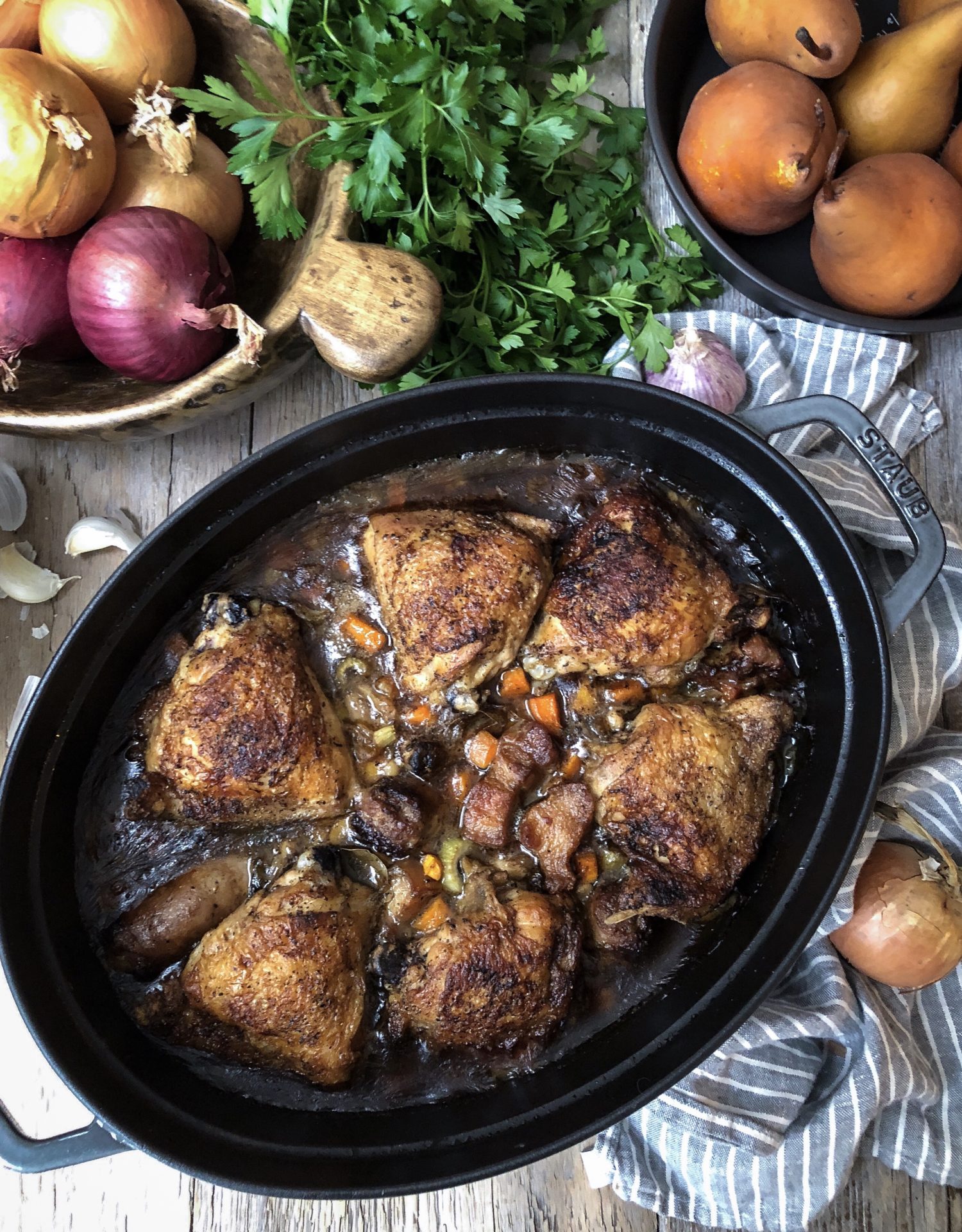
The one area I deviate from Kenji’s recipe is the use of veggies. He uses them to flavour the beans and broth, but doesn’t leave them in the final dish: he cuts them larger to make them easier to fish out. I actually like them in the dish. Two reasons: they’re good for you, and add an extra layer of flavours and textures. And they add just a hint of colour. If not, this dish is decidedly brown. I like that pop of gentle green from the celery or the softer orange of the carrot. But that’s me.
Many complain about all the steps involved in creating a good Cassoulet. But I am going to streamline it for you. There are really only 4 steps in total. The first one happens the evening before. Using dried cannelini beans and soaking them is the best way to create this dish. So do it! The next day, you will sear all the meats: the cubed pork belly, the chicken thighs and/or legs, and the garlic sausages (toulouse work perfectly here) Once they are all seared and placed in a large bowl or platter, you will start cooking the beans with onions, garlic and stock. After about 45 minutes, once the beans have become tender, the meats and diced veggies get added in, with the chicken skin side up on top. The beans should be submerged. The whole thing then goes into the oven, uncovered. That’s it. And it bakes at a low temperature. The stock will create a skin as it bakes down. Every once in a while you will break the skin and shake it all up and put it back in the oven. This will create an even better crust. If the liquid is baking off too quickly, you can add some more stock to keep everything from drying out. In the end it is the most amazing pot of beans, veggies and meats. The flavour is out of this world.
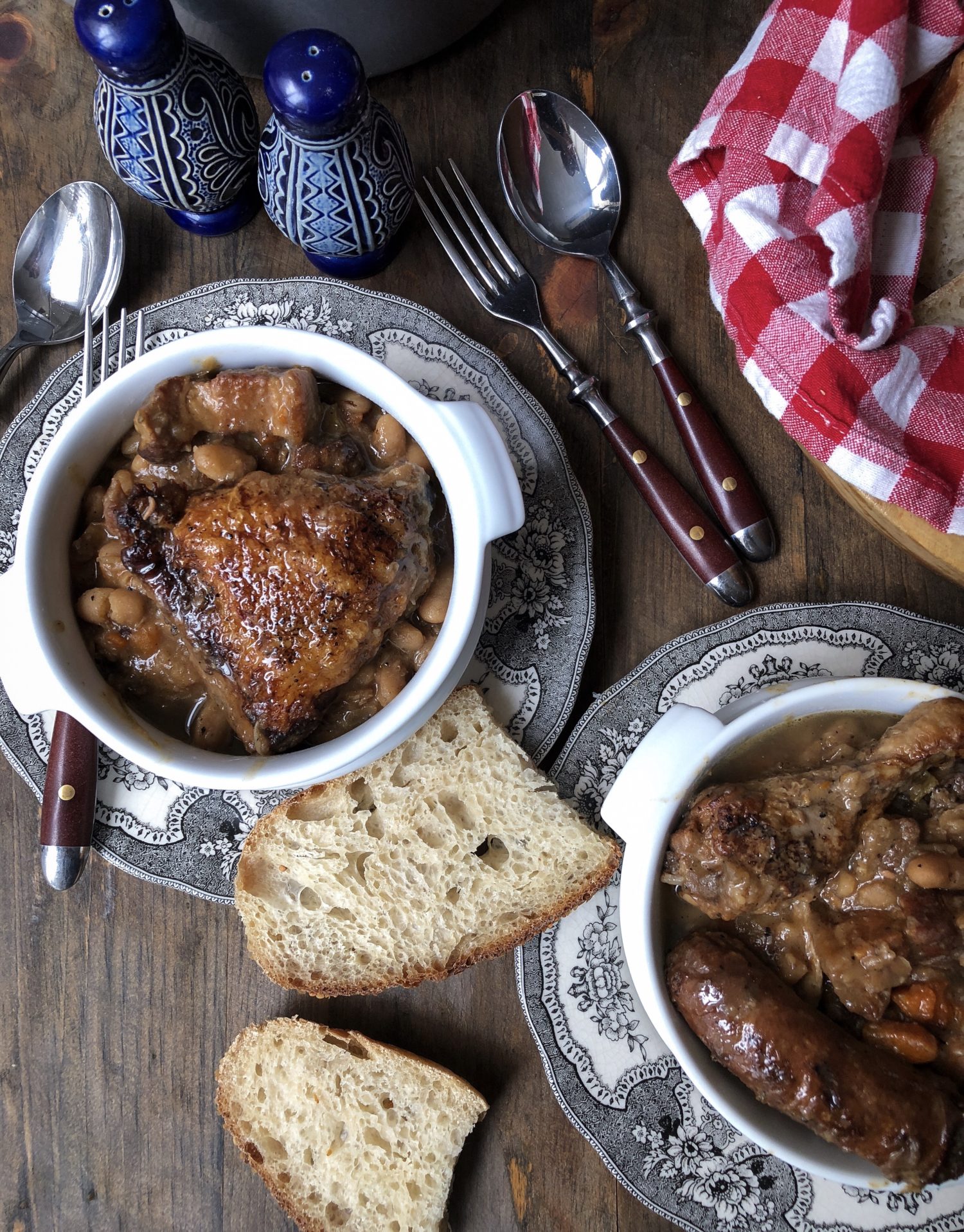
I know I’ve described all the worst things that might happen. But I’m not trying to scare you off from making this dish. It is really a most comforting and highly flavoured dish when done correctly. I still have friends coming up to me, raving about how much they loved it, how cozy it made them feel on the coldest winter eve, as well as how good it tasted. The presentation in the dutch oven makes for an impressive dish, even if at its core, it is peasant food. The cuts of meat and the beans were actually the cheapest meats back when this dish was first developed. But, with a light, bright, green, crunchy salad, and thick slabs of sourdough bread to soak up any leftover liquids, this is a meal fit for the best of company and the closest of friends.
Leftovers are great the next day, reheated on low with a bit of extra broth or water, since it will have thickened up over night in the fridge. In fact, Jim says it’s even better the next day!
Here’s a little trick for keeping this dish totally casual, like something our mums would have made: leave the bay leaves and cloves in it. Don’t try and fish them out. Just warn everyone that they might find some of the above. This happened to me all the time as a kid, and when someone fishes out a piece of bay leaf, it will totally make them think that their mum made it!! ;D
Love Jen.
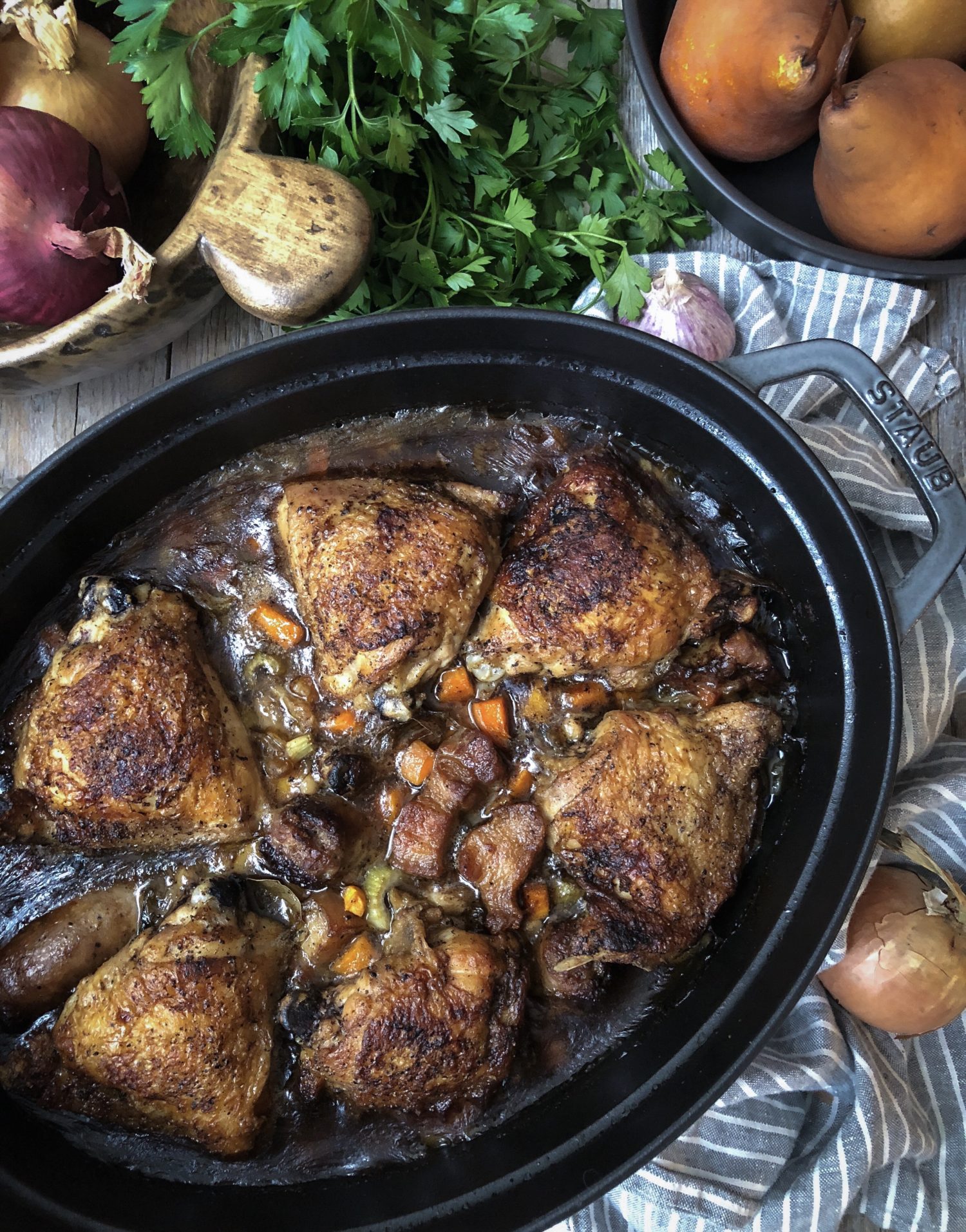
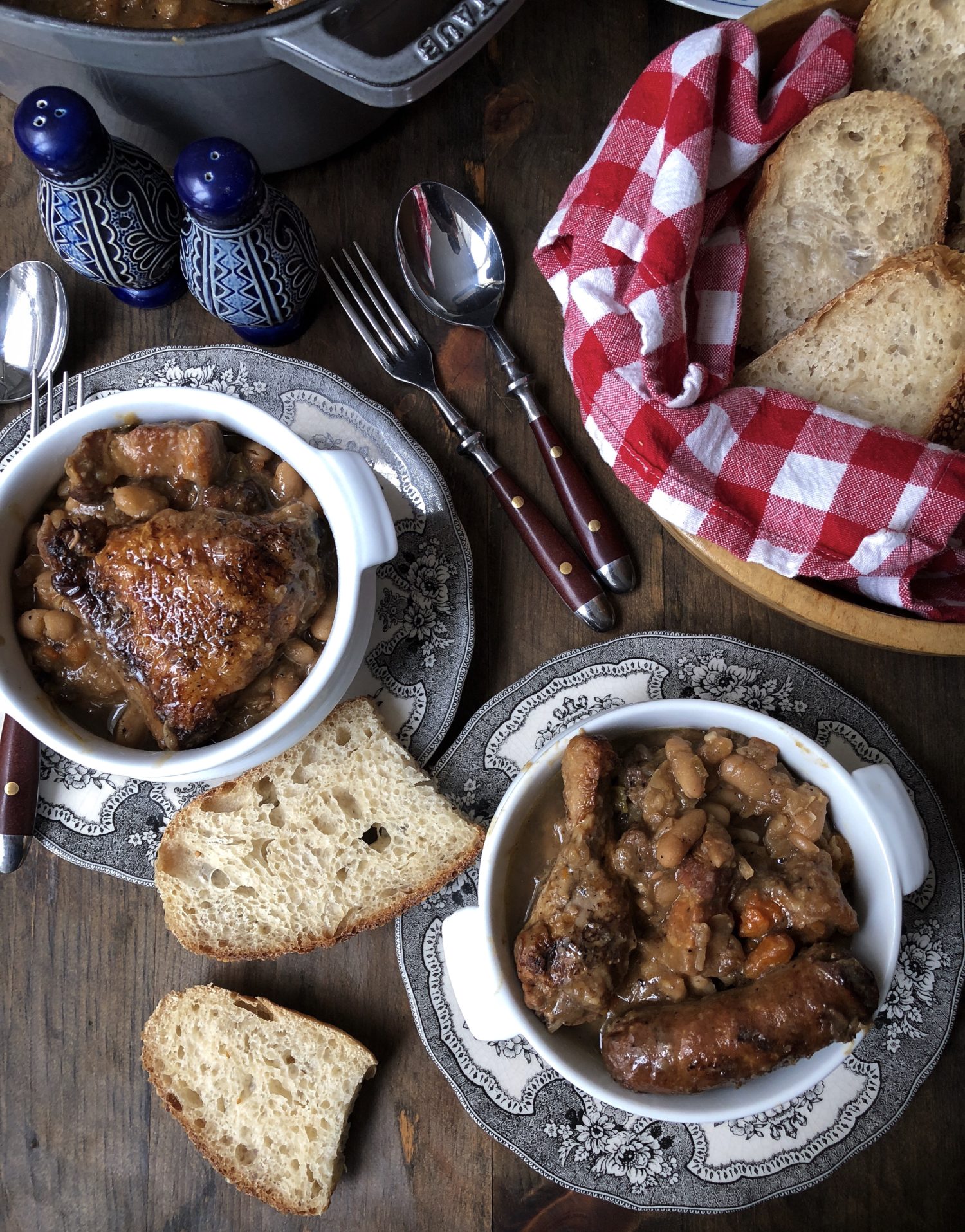

Cozy and Comforting French Cassoulet
This classic stew/chilli of beans, aromatics, veggies, and seared meats is not too thick or heavy, as some versions can be. Slow baking uncovered creates a crust without relying on breadcrumbs to achieve this. And leftovers are even more amazing!
Ingredients
- 1 pound 454 grams dried cannellini beans
- Kosher salt
- 1 quart 1 litre homemade or store-bought low-sodium chicken stock , and more if needed to thin out the cassoulet as it cooks down
- 3 packets 3/4 ounces unflavored gelatin, such as Knox (see note)
- 2 tbsp 30 grams duck fat (optional)
- 8 ounces 225 grams pork belly, cut into 3/4-inch cubes
- 6 to 8 pieces of chicken thighs and drumsticks or 4 whole chicken leg quarters
- Freshly ground black pepper
- 1 pound 450 grams garlic sausage (2 to 4 links depending on size)
- 1 large onion finely diced (about 1 cup)
- 1 whole head garlic separated and crushed
- 2 large carrots unpeeled, cut into 1/2 inch dice
- 3 stalks celery cut into 1/2 inch dice
- 3 bay leaves
- 8 cloves
- 6 sprigs parsley
Instructions
Step One: Soak Beans (overnight)
-
In a large bowl, cover beans with 3 quarts (3 litres) of water and add 3 tbsp salt. Stir to combine and let sit at room temperature overnight. Drain and rinse beans and set aside.
Step Two: Sear the Meats (30 minutes or so)
-
Adjust oven rack to lower middle position and preheat oven to 300°F.
-
Place the stock in a large liquid measuring cup and sprinkle gelatin over the top (see Note below). Set aside.
-
Heat duck fat (if using) in a large Dutch oven over high heat until shimmering. Add pork belly and cook, stirring occasionally, until browned all over, about 8 minutes. Transfer to a large bowl and set aside. (If not using duck fat, cook pork with no additional fat.)
-
Season chicken pieces with pepper (do not add salt) and place skin side-down in now-empty pan.
-
Cook without moving until well browned, 6 to 8 minutes. Flip chicken pieces and continue cooking until lightly browned on second side, about 3 minutes longer. Transfer to bowl with salt pork.
-
Add sausages and cook, turning occasionally, until well-browned on both sides.
-
Transfer to bowl with salt pork and chicken. Drain all but 2 tablespoons fat from pot.
Step Three: Cooking the Beans (45 minutes)
-
Add onions to the pot and cook, stirring and scraping up browned bits from the bottom of the pot. Cook for 2 minutes, and then add half of the crushed garlic cloves.
-
Cook until onions are translucent but not browned, about 4 minutes.
-
Add drained beans, bay leaves, cloves, and stock/gelatin mixture. Bring to a simmer over high heat. Reduce the heat to low, cover with a lid, and cook until beans are almost tender but retain a slight bite, about 45 minutes.
Step Four: Baking the Beans and Meats (5-6 hours)
-
Add the carrots, celery and remaining garlic to the beans and stir gently.
-
Add the meats in layers, pork belly and sausages first, gently incorporating them lightly into the beans.
-
Add the chicken on top of the beans with the skin facing upwards. Beans should be almost completely submerged.
-
Transfer to oven and cook, uncovered, until a thin crust forms on top, about 2 hours, adding more water (or stock if you have it) by pouring it carefully down the side of the pot as necessary to keep beans mostly covered.
-
Break crust with a spoon and shake pot gently to redistribute.
-
Return to oven and continue cooking, stopping to break and shake the crust every 30 minutes until you reach the 4 1/2 hour mark.
-
Return to oven and continue cooking undisturbed until the crust is deep brown and thick, another hour or so, or about 5 to 6 hours total. Serve immediately.
Recipe Notes
Salt added to the dry beans while soaking helps keep them tender as they cook.
Homemade stock cooked for a long time will naturally have enough gelatin (use my version here, to make up several quarts (litres) to store in the freezer till needed!) Only use the commercial gelatin if you are using purchased stock or if you are concerned that your stock may not have enough gelatin in it.
Duck fat will help impart the rich flavour to all the meats, without the need to purchase duck confit, which may be harder to obtain, or not liked by some members of the family. You can purchase a container of duck fat at most independent butchers. Even larger grocery chains now carry it in the deli or meat aisle. It's worth it, use it! And once you have it, it stores it in the back of the fridge indefinitely!
Make sure the dutch oven or casserole is large enough to hold everything. Ideally it should also be as wide as possible, for the most exposure of gelatin to air! For a great crust! Don't be put off by the time in the oven. It is all about creating the crust. If you find that the beans are cooked through, and the gelatin crust isn't important to you, you can definitely serve this earlier.
Serve this with a bright, crisp green salad to balance out the richness of the dish. Sourdough bread on the side will be great to soak up any juices and broth.
Leftovers can be reheated with some more stock added to them. Overnight the beans will soak up any remaining liquid, causing everything to thicken up. The extra broth will help loosen it all up as it reheats.
This is a riff on Serious Eat's recipe found here
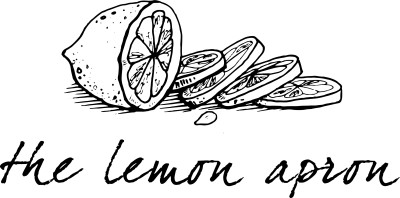
Lovely recipe, appreciated the simplified prep. Lighter without the duck confit and brilliant suggestion to leave in the veggies. Company loved it and asked for the recipe. This one’s a winner.
Hi Heidi! Thanks so much for your feedback. I’m so happy you like the adjustments as much as we do. It’s such a perfect cool weather meal. All the best, Love Jen
It’s just another different cassoulet recipe. I will try it. I have made cassoulet with duck confit which is not such a big deal you can make them quite easily. I would not leave out the ham hock because when I cook it with the beans the beans take the flavour and if you leave it it too develops gelatine. I like the breadcrumbs on the top it is really each to their own. This is a peasant dish and in al honesty it will use ‘the Bay of Biscay principle’, which I have finessed from making Marmitako which was a tuna fish dish made on trawlers. The cook would have just thrown in what was there, if they had forgotten or did not have one of the ingredients they would not have turned back or waited before setting sail. Cassoulet is simply a dish where the peasants threw in what they had before it got taken over by the pontificators. All cassoulets are cassoulet, make according to taste and just keep on trying. I like the last one I cooked I am sure I will like this one too.
Hi Peter, You are right, there are so many versions. I hope you like this one. I tried to make it more user friendly without losing the essence of the dish. Love Jen